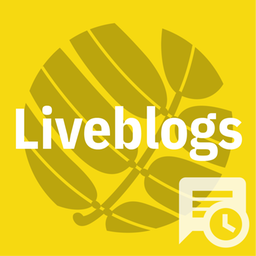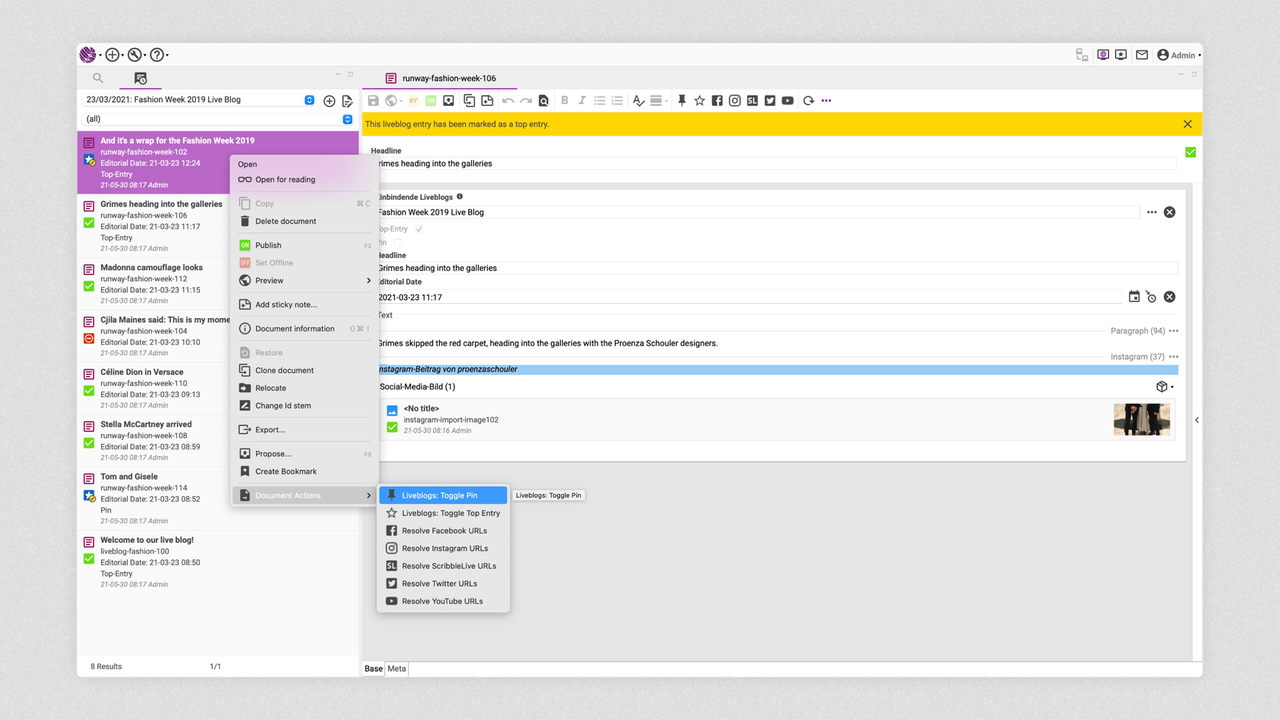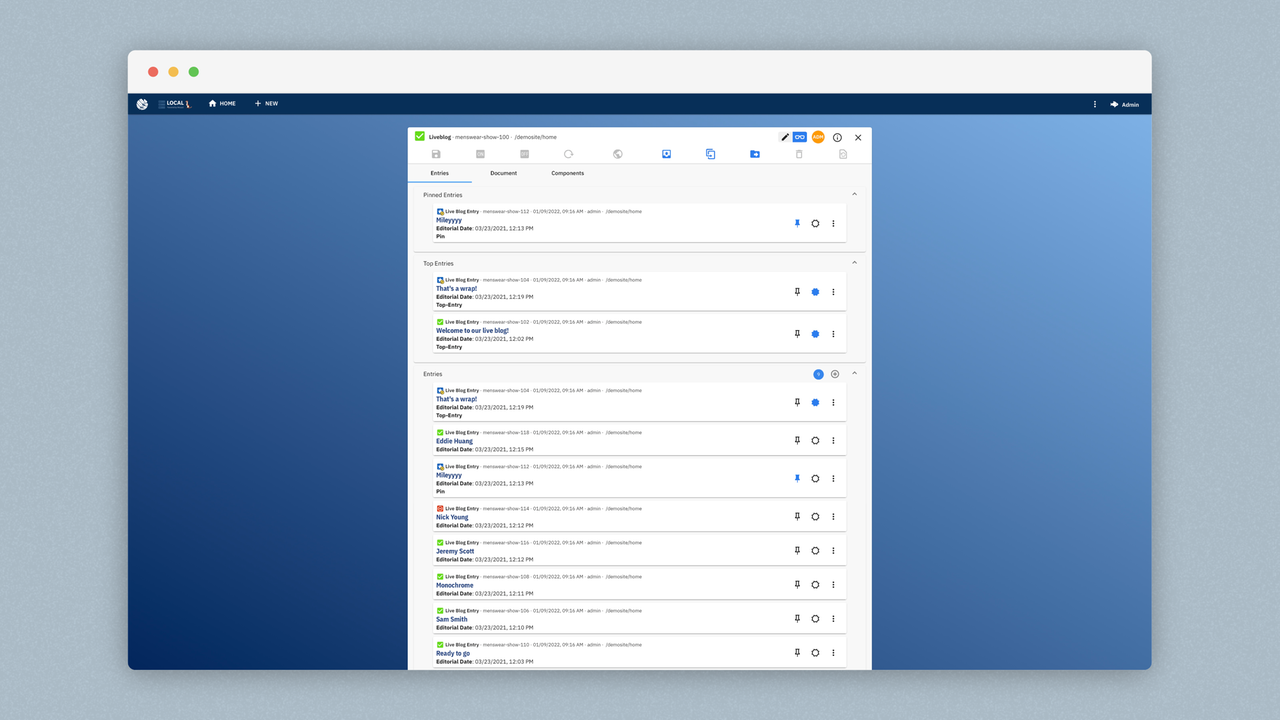

With Sophora "Liveblogs", editors can work together to jointly create and publish liveblogs.

A special liveblog view in the Sophora editors provides an overview of the blogs in process. And the liveblog view serves both as the entrance to the editing of liveblog entries and for liveblog coordination.
Individual liveblog entries can be edited and delivered independently of the liveblog document and other entries. The individual liveblog entries then refer to the respective liveblog document.
“Sophora Liveblogs” brings some important fields with it and supports individual document types and customer-specific solutions, such as a breaking news push function.
The Sophora Liveblogs module has the following advantages over writing liveblogs in a single document:

The liveblog view in the DeskClient shows the current processing status of the entire liveblog and enables new entries to be created quickly.
The liveblog view contains all information and functions relevant for liveblog coordination.
The liveblog view offers filter options, enables the opening of all liveblog documents and offers the option of marking, deleting and publishing entries.
The liveblog entries are displayed in a special tab "Entries" in each liveblog document in the MobileClient. There you can create new entries, pin and highlight entries.

The liveblog entries are created in the liveblog view and are automatically linked to a liveblog document.
Sophora Liveblogs already provides common and relevant fields for the entry. Others can be configured, such as linking an author profile or setting an author abbreviation.
The copy text of a liveblog entry can be individually configured and uses customer-specific settings, including inserting video, audio or image documents.
The copy text can also consist of several different types of paragraphs, for example, a normal text paragraph and a social media paragraph (e.g. Twitter tweet or Facebook post).
In order to retain individual document types and customer-specific solutions (e.g. the breaking news push function), the properties of the liveblog document and the blog entry are delivered as mixins. These can be added to existing or new node types.
The DeskClient and the MobileClient use the same Java code.
Some functions, such as marking entries as top entries, are implemented with scripts that work both in the MobileClient and DeskClient.
Note: For playout, we assume that the liveblogs are cached on a time basis and that the playout cyclically checks whether there are new entries.